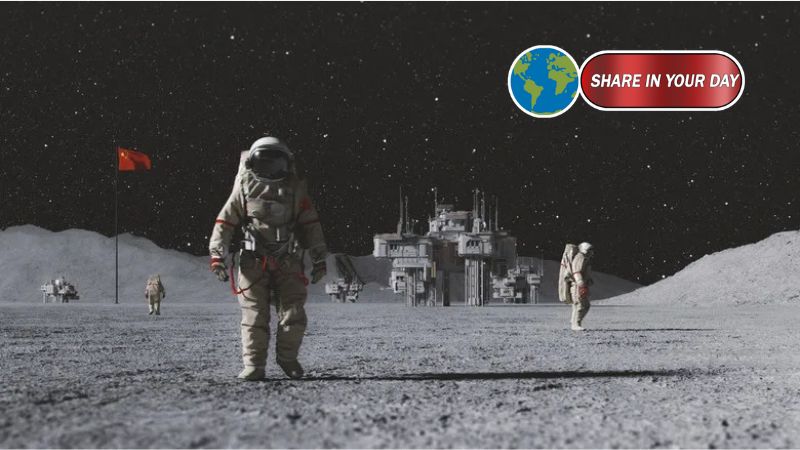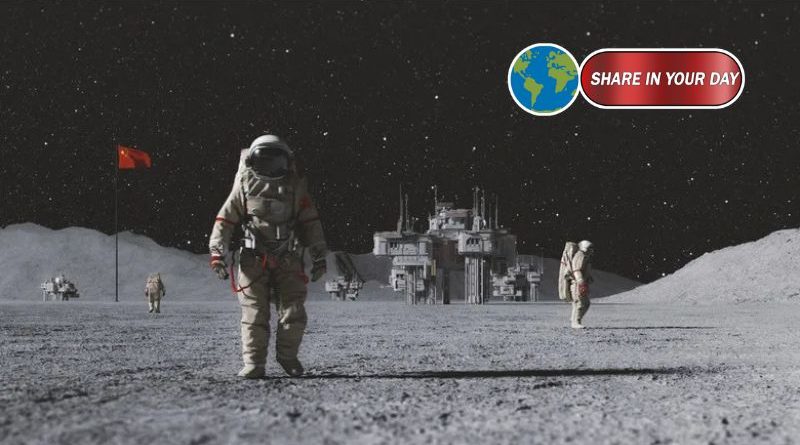China Might Land Astronauts on the Moon Before NASA — Here’s Why That Matters
BEIJING / WASHINGTON — More than five decades after the last human walked on the moon, the race to return is heating up again—and this time, the United States may not get there first.
China is accelerating its lunar ambitions with a clearly defined timeline to land astronauts on the moon before 2030. If successful, it would not only mark a historic achievement for China’s space program but also signal a tectonic shift in global space leadership—one with major geopolitical, technological, and scientific consequences.

Meanwhile, NASA’s Artemis program, intended to return American astronauts to the lunar surface for the first time since Apollo 17 in 1972, continues to be plagued by delays, technical setbacks, and shifting political priorities.
A New Lunar Race Is Underway
The Cold War space race of the 1960s pitted the U.S. against the Soviet Union in a high-stakes contest for technological dominance and ideological supremacy. Today’s lunar competition between the U.S. and China bears striking similarities—with both nations pushing cutting-edge technologies and national pride—but this time, the rules have changed.
Unlike the U.S.-Soviet binary rivalry of the past, today’s race unfolds in a complex, multipolar world where private companies, alliances, and long-term industrial strategy all play key roles. China’s state-led, centrally coordinated approach contrasts sharply with NASA’s model, which depends heavily on commercial partnerships, congressional budgets, and political continuity across administrations.
China’s Plan: Clear Goals, Steady Progress
China’s plan to land taikonauts on the moon involves two new spacecraft: the Mengzhou crew vehicle and the Lanyue lunar lander. Both are slated to launch aboard the powerful new Long March 10 rockets. The missions will rendezvous in lunar orbit before two astronauts descend to the surface—a process modeled on the Apollo missions but with next-generation systems.
The timeline is ambitious but organized. In 2025, China successfully tested Lanyue’s descent and ascent systems in a ground simulation mimicking lunar conditions. Engine tests for Long March 10 have remained on schedule, and China plans to launch the Chang’e-7 robotic precursor mission in 2026 to explore the moon’s south pole and locate potential water ice deposits for future use.
Meanwhile, NASA Struggles With Delays
NASA’s Artemis program—heralded as America’s bold return to deep space exploration—is facing significant headwinds. The second mission, Artemis II, now rescheduled for April 2026, will carry astronauts around the moon, while the actual lunar landing is tentatively pushed to 2027 or later.
A key issue is the Orion spacecraft’s heat shield, which failed to perform as expected in earlier testing. Engineers are working to redesign and verify the system, a process that has forced costly delays. At the same time, NASA’s budget is under pressure, with some science missions and infrastructure projects postponed in favor of Artemis.
Adding to the complexity, NASA relies on SpaceX to develop the Human Landing System (HLS) using its Starship rocket. However, Starship still requires orbital refueling, docking, and in-space crew transfer capabilities—technologies that are not yet flight-proven. Despite several high-profile test flights, many critical systems remain in early stages of development.
Geopolitical Implications: Beyond the Moon
If China becomes the first nation in over 50 years to land humans on the moon, the implications will extend far beyond national pride.
- Strategic Power: A successful landing would elevate China’s stature in global diplomacy, solidify the Chinese Communist Party’s legitimacy, and attract countries into Chinese-led space initiatives like the International Lunar Research Station.
- Scientific Edge: Mastery of crewed lunar missions would allow China to lead in critical technologies such as in-situ resource utilization, radiation protection, and life support systems for long-duration space travel.
- Dual-Use Technologies: Lunar operations could provide China with strategic capabilities that have dual-use military applications—such as surveillance, satellite positioning, and missile guidance systems—potentially altering national security dynamics.
- Medical and Technological Innovation: Lunar research also offers avenues to advance space medicine, particularly in understanding human physiology in microgravity and high-radiation environments.
A Challenge to U.S. Leadership
Despite being a pioneer in space exploration, the United States now finds itself facing a credible challenge from a rising competitor. While NASA remains a powerhouse in space science and technology, its ability to execute complex, long-term missions is being tested by bureaucratic hurdles, shifting political will, and overreliance on private contractors.
China’s centralized and disciplined approach offers a stark contrast—one that could give it the edge in reaching the lunar surface first.
“We’re not just racing to the moon—we’re racing for the future of global space leadership,” said a former NASA official, speaking on condition of anonymity. “And the window of opportunity is narrowing.”
As the world watches the skies, a new chapter in lunar exploration is being written—not only in labs and launchpads but also in boardrooms, budget hearings, and international treaties. The next footsteps on the moon may well belong to China—and they could echo for generations.




